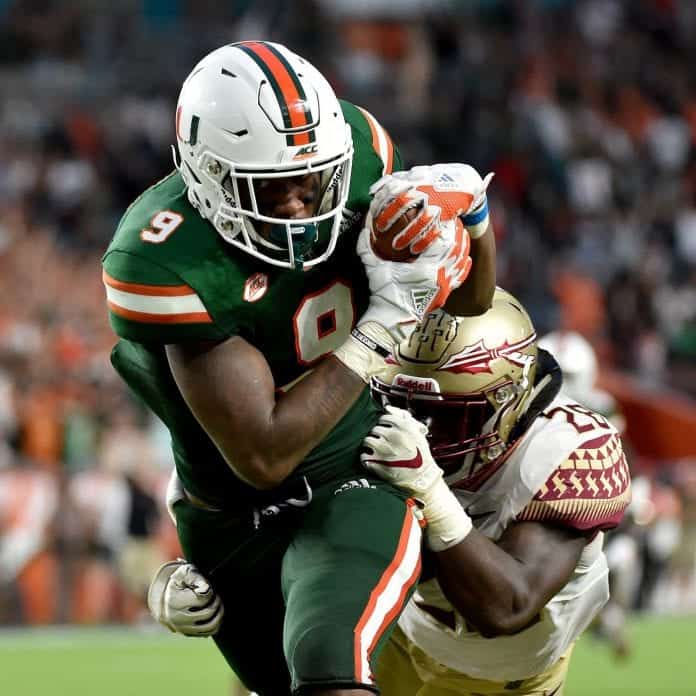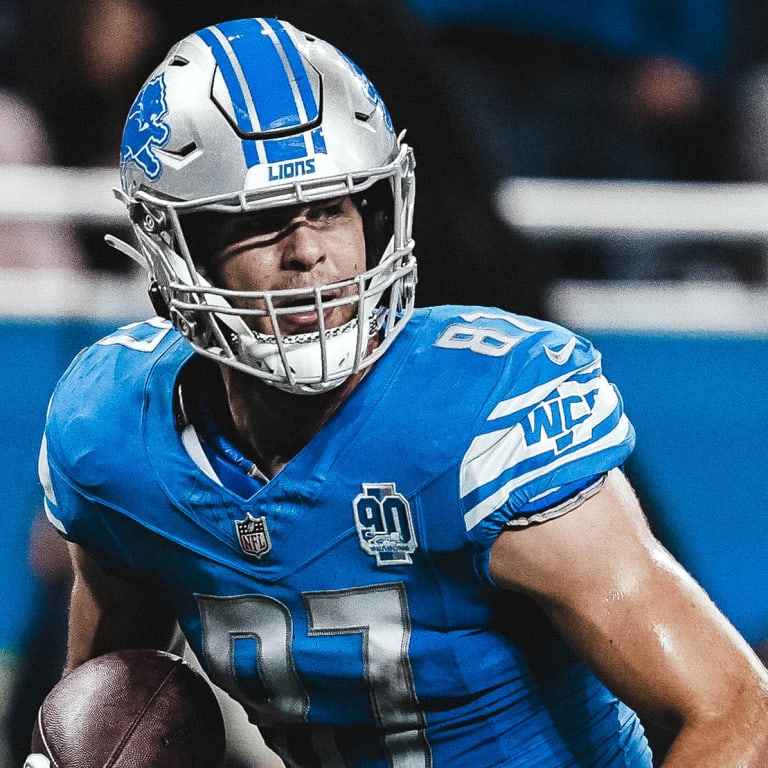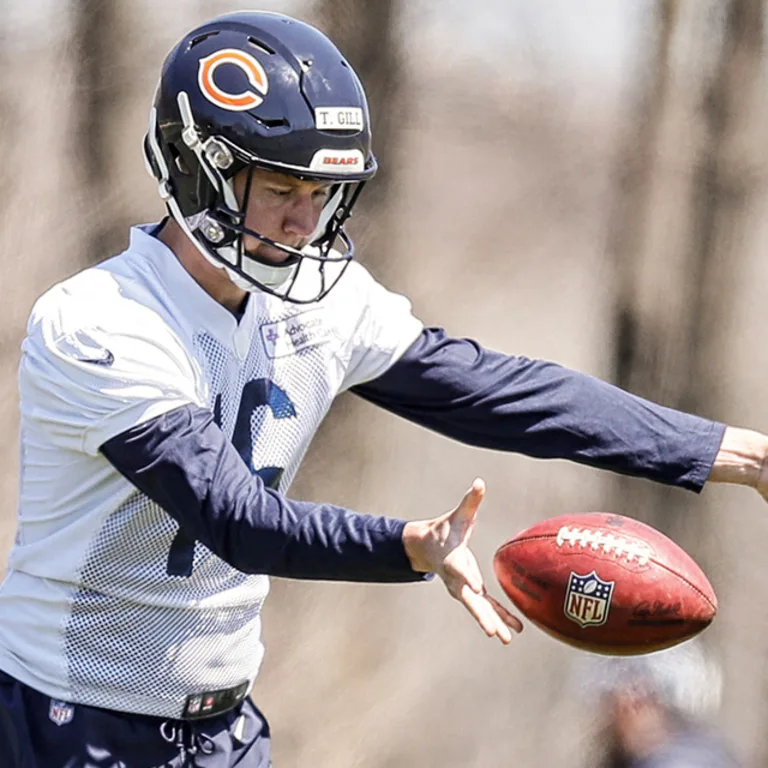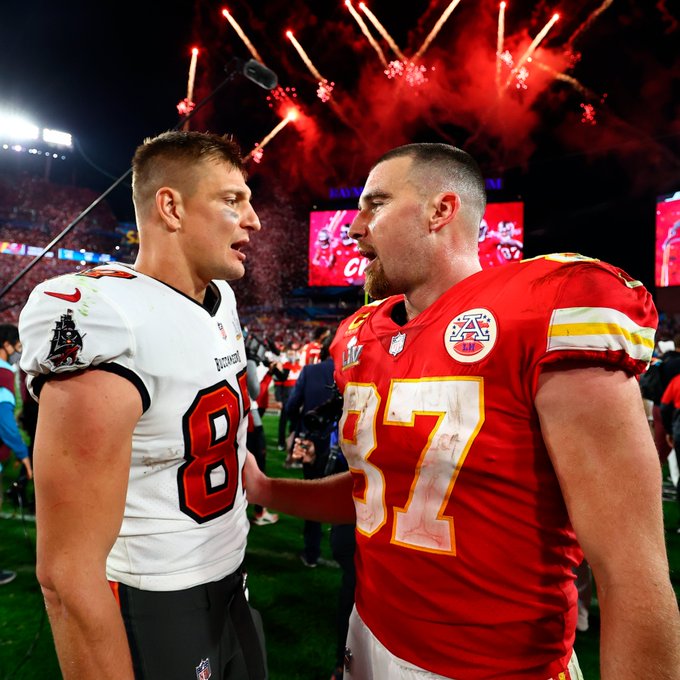I. Introduction

A. Definition and role of a football tight end
In American football, the tight end is a key position on the offensive team. They line up on the line of scrimmage, usually next to an offensive tackle, and can play a variety of roles on the field. Tight ends are typically larger and more physical than wide receivers, but more agile and versatile than offensive linemen. They are expected to be effective blockers in the running game, while also being able to catch passes and contribute as receivers in the passing game.
B. Evolution of the tight end position in football
The role of the tight end has evolved significantly over the history of American football. In the early days of the sport, tight ends were primarily used as blockers, with very little involvement in the passing game. However, as the game has become more pass-oriented, tight ends have become important targets in the passing game. Modern tight ends are expected to be multi-dimensional players, capable of making key blocks in the running game and creating mismatches as receivers.
II. Skills and Attributes
A. Blocking abilities of a tight end
One of the primary responsibilities of a tight end is to be an effective blocker in the running game. This requires strength, technique, and a willingness to engage with larger, more physical defensive players. Tight ends often line up next to offensive tackles and are critical in setting the edge on outside runs .
B. Receiving skills and route-running capabilities
In addition to their blocking duties, tight ends are also important targets in the passing game. They are often utilized in short to intermediate routes over the middle of the field, taking advantage of their size and athleticism to create mismatches against smaller defensive backs. A successful tight end needs to have strong hands, good route-running ability, and the spatial awareness to find openings in the defense.
C. Versatility in different offensive formations

Tight ends are required to be versatile players, capable of lining up in a variety of formations and executing different roles within the offense. They may line up as traditional in-line tight ends next to the offensive tackle,or even line up in the backfield as an H-back. This versatility creates flexibility for the offense and presents challenges for the defense in terms of how to match up against them.
III. Impact on Offense
A. Creating mismatches and strategic advantages
The tight end position in football presents a unique advantage for an offense due to the versatility of the player. With a combination of size, strength, and speed, tight ends can create mismatches against smaller defensive backs and slower linebackers. This strategic advantage allows teams to exploit favorable matchups, opening up opportunities for successful plays.
B. Contributions in the passing game and red zone situations
Tight ends play a crucial role in the passing game, providing quarterbacks with reliable targets in various situations. Their ability to run precise routes, use their physicality to gain position, and make contested catches make them valuable assets in critical down-and-distance scenarios. Moreover, in red zone situations, tight ends become prime targets due to their size and ability to outmuscle defenders in the end zone, making them vital for scoring touchdowns and converting in pivotal moments.
C. The tight end’s role in running plays and play-action passes
In addition to their impact in the passing game, tight ends are essential in running plays and play-action passes. Their blocking prowess and understanding of run schemes enable them to create lanes for running backs. Furthermore, their involvement in play-action passes adds a layer of deception to the offense.
IV. Notable Tight Ends
A. Legendary tight ends in football history
Throughout the history of football, several tight ends have left an indelible mark on the sport. From Mike Ditka and John Mackey to Tony Gonzalez and Shannon Sharpe, these legendary players have redefined the tight end position, showcasing unparalleled skill, athleticism, and impact on the game.
B. Modern-day standout players in the tight end position
In today’s game, modern tight ends continue to push the boundaries of what is possible at the position. From Rob Gronkowski and Travis Kelce to George Kittle and Darren Waller, these contemporary players have elevated the tight end position with their exceptional abilities.
C. Memorable performances and contributions to the game
Tight ends have delivered numerous standout performances, delivering game-changing plays and leaving an enduring impact on the sport. From record-breaking receptions to clutch catches in pivotal moments, the memorable contributions of tight ends have shaped the narrative of the game, earning them a place in football lore and the admiration of fans worldwide.
V. Defensive Responsibilities
A. Pass-blocking and protection for the quarterback
Tight ends play a crucial role in protecting the quarterback during passing plays. They are often called upon to provide additional blocking against opposing pass rushers. This requires strong blocking technique and awareness to identify incoming threats.
B. Responsibilities in run-blocking and opening up lanes for runners
In the running game, tight ends are instrumental in creating lanes for running backs to exploit. They must be able to engage with defensive players, sustain blocks. This often involves sealing the edge or executing combination blocks with other offensive linemen to clear a path for the ball carrier.
C. Coverage assignments and defensive roles for tight ends
On the defensive side of the ball, opposing teams may use tight ends as receivers in the passing game, creating the need for defenders to cover them. This presents a challenge for defensive coordinators and players alike as tight ends can use their size and athleticism to create mismatches against smaller defensive backs.
VI. The Future of Tight Ends
A. Evolving trends and developments in the role of tight ends
The role of the tight end in football continues to evolve, with teams utilizing their skill sets in increasingly diverse and creative ways. Tight ends are being deployed in a variety of offensive schemes, from traditional run-heavy formations to spread offenses that emphasize passing. As the game evolves, the expectations for tight ends are shifting, requiring them to be more dynamic and versatile players.
B. Predictions and potential impact on the game
Looking ahead, tight ends are poised to have a significant impact on the future of football. With their ability to create mismatches against opposing defenses, they will continue to be key playmakers in both the running and passing game. As offenses become more innovative in how they deploy tight ends, we can expect to see them playing an even more central role in offensive game plans.
C. Training and preparation for aspiring tight ends
As the demands on tight ends continue to evolve, aspiring players must adapt their training and development to meet these new challenges. Tight ends are now expected to excel in both blocking and receiving, requiring a diverse skill set that includes strength, agility, and football intelligence. This means that aspiring tight ends should focus on honing their skills in both areas to excel at the professional level.
In conclusion, the role of tight ends in football is constantly changing. And their impact on the game continues to grow. As the game evolves, tight ends will play an increasingly vital role in shaping the strategies. And it will make them a dynamic and crucial position on the field.

